You’ve probably never heard of Cesena, right? This little town sits between the Adriatic Coast and the hills of Romagna, and has many interesting sights to offer. Here we’ll share with you 8 reasons to visit Cesena!
On May 17th and 18th, 2023, the region of Emilia-Romagna was hit by catastrophic floods. After a year-long drought, three months’ worth of rain fell over the course of just a few hours. Rivers burst their banks, landslides fell, streets were destroyed, and several towns and villages were covered with mud and dirty water.
15 people lost their lives, and over 15,000 had to be evacuated from their homes. Over the following weeks, emergency workers and volunteers worked tirelessly to clean houses and streets from the mud, while affected roads and paths were slowly being repaired.
One of the cities that were deeply affected by this catastrophe was Cesena. We had the opportunity to visit Cesena in October 2021, while we explored the Cammino di San Vicinio in southern Romagna. Images of the river Savio rushing through the historic centre, cars floating in dirty water, and people watching helplessly as their belongings were swept away brought tears to our eyes.
A month after the floods, Cesena has been cleaned up and is now ready to welcome tourists again. There’s no better way to support the city than visiting – you can easily reach Cesena from Bologna, from Rimini, or include it in your Italian road trip.
Let’s have a look at 8 reasons to visit Cesena!
Reasons to Visit Cesena
1) Admire the Biblioteca Malatestiana

Let’s start with a bang, with a unique UNESCO-listed sight, the best-preserved humanistic library in Italy, and one of the last surviving chained libraries in the world.
What is a chained library, you may ask. The Biblioteca Malatestiana was opened in 1454 by Malatesta Novello, lord of the city. At the time, printing was not yet commonplace – Gutenberg’s bible was printed only the following year. All the books contained in the library were handwritten and very valuable, so they were chained to the shelves to prevent stealing.
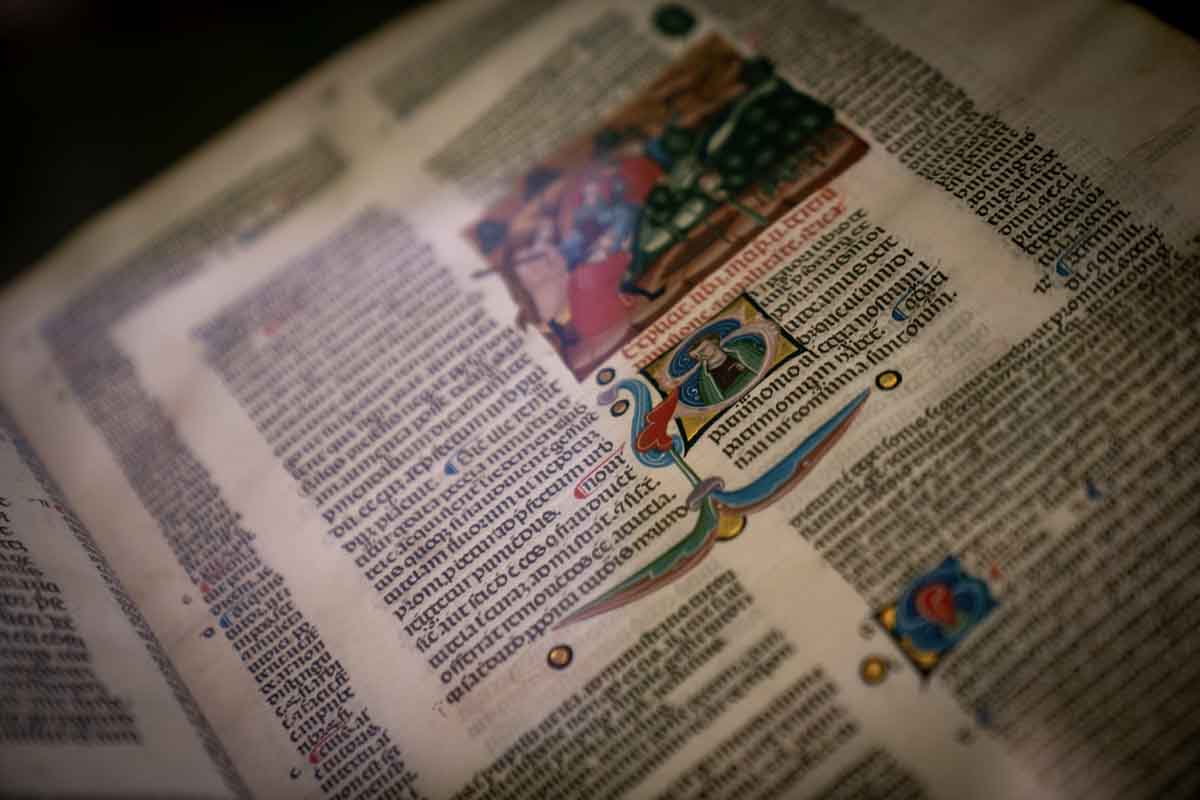
The library contains 343 books, intended to be a collection of the knowledge of the time. Most books are about history, philosophy, law, military tactics, medicine, and literature, written in Greek and Latin. The old Biblioteca Malatestiana is included in the newer library of the same name – the reading room is located behind a heavy door, which needs to be opened with two keys.
Inside, it looks curiously like a church, with three naves and lecterns lined with benches, looking like pews. Inside, everything is as it was in the 15th century. There’s no electricity, and the original books are still in place. Books can’t be consulted, but they are exhibited regularly for people to see.
2) Explore Rocca Malatesta
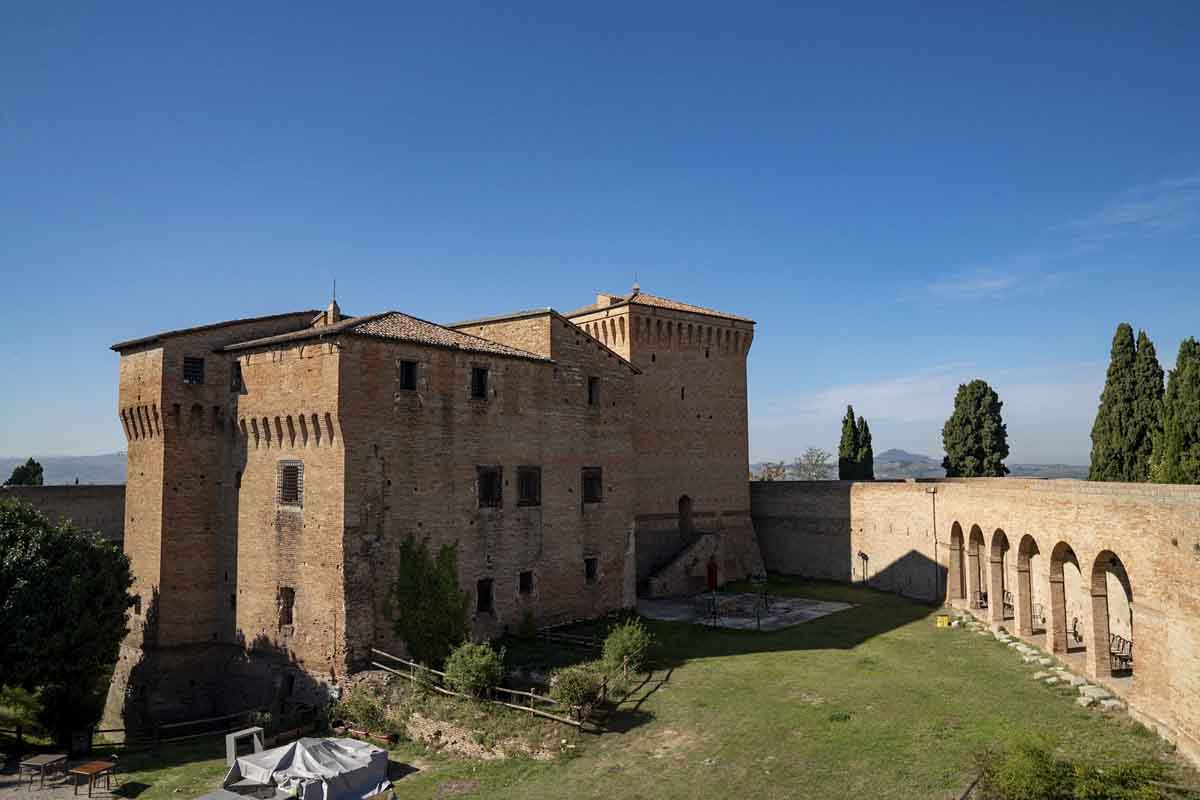
Ok, the next sight also contains ‘Malatesta’ in its name, after the family that ruled over the region for three centuries. The city of Cesena is dominated by Rocca Malatesta, a fortress sitting on the top of the hill right next to Cesena’s main square.
Climbing to the top of the Rocca is easy – there’s an arch on the side of Piazza del Popolo, taking you through a path that crosses the park surrounding the fortress.
Once inside, it’s possible to pass through the walls to enter the main courtyard, where you can see the two main structures – the Palatium and Torre Maestra. In the latter, there’s a museum dedicated to farming culture, with information about the history of farming and some equipment on display.
It’s also possible to join a guided tour that takes you to the top of the fortress, and to the passages running through the defense walls. Our guide was Ivan Severi – you can get in touch with him at +39 333 3996084
3) Visit Piazza del Popolo
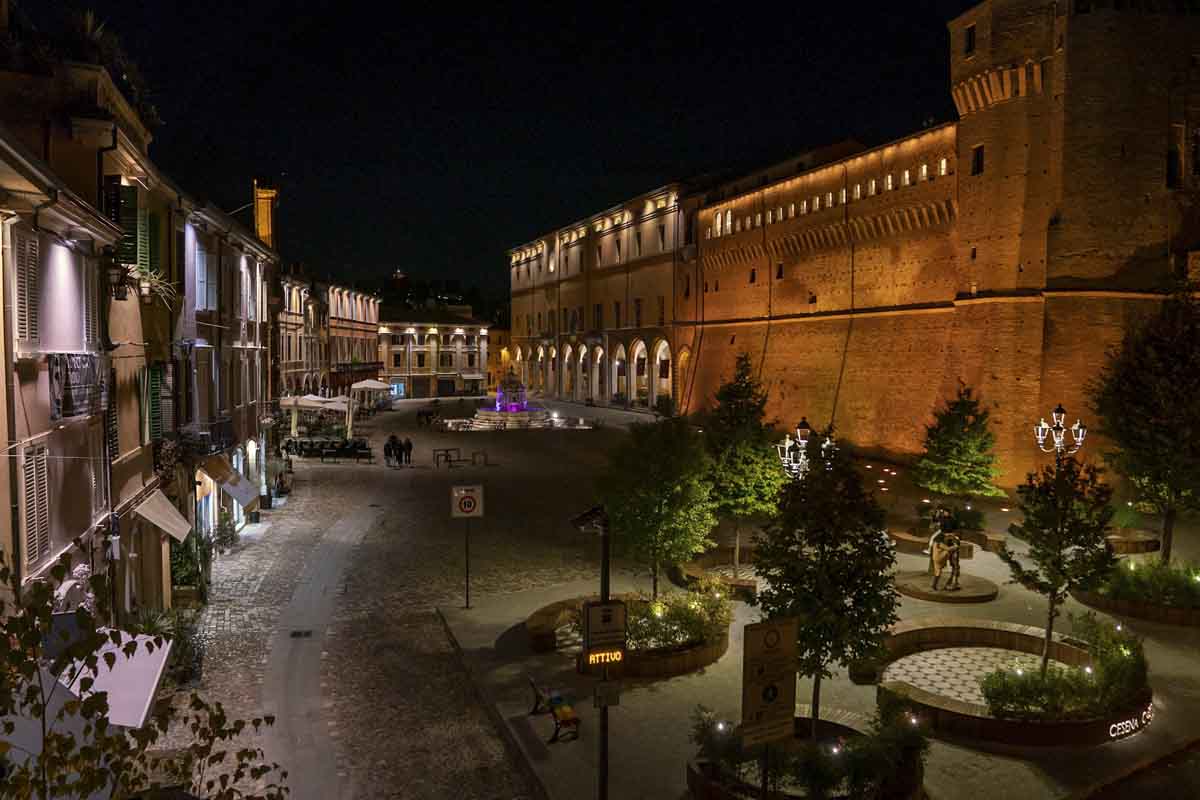
Piazza del Popolo is the heart of Cesena, and you’re bound to pass through it during your visit. It’s one of the most beautiful squares in this region, surrounded by interesting buildings like the Rocchetta di Piazza, a smaller version of the larger fortress on top of the hill.
On the Rocchetta tower, you can read Dante’s description of Cesena – ‘the city with its side bathed by the Savio, just as it lies between the plain and mountain, lives somewhere between tyranny and freedom.’ Dante’s verses refer to Cesena being an ‘in between’ sort of place – between the seaside and mountains, between the free municipalities of the early Middle Ages and the tyranny of foreign lords.
In the centre of the square you can also see Fontana Masini, one of the symbols of the city dating back to the 16th century, and a short distance away you’ll find a bronze statue by Leonardo Lucchi representing two ropewalkers.
Once evening falls, Piazza del Popolo becomes a great place to enjoy a glass of wine, especially pleasant on a summer evening!
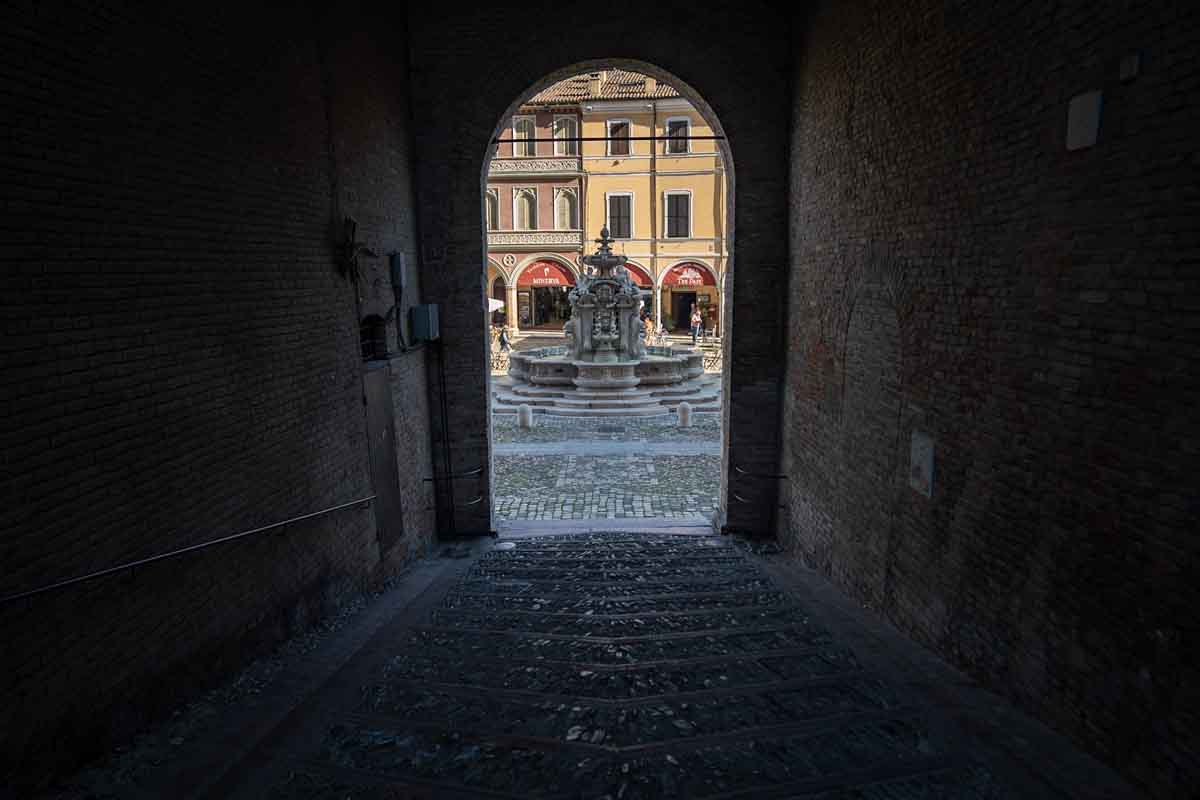
4) Walk Up to the Abbey of Santa Maria del Monte
Every Italian city has a church worth visiting. In Cesena, we’d like to recommend heading to the Abbey of Santa Maria del Monte, located on the hills surrounding the city, about 20 minutes walk from Piazza del Popolo.
There has been a monastery in this location ever since the year 1000, but the current look dates back to Renaissance times. Its millenary history includes sieges and battles, the latest of which took place in the late 18th century, during Italy’s reunification. Nowadays, it’s a popular place of worship for pilgrims from Cesena and beyond.
The church is free to access and can be visited at any time, except during services. The church itself is worth seeing, especially for its impressive dome, but the real marvel is the ex voto museum – the largest in Europe, with over 700 on display.
5) Catch a Show at Teatro Bonci
Are you a theatre lover? If so, check out the program of Teatro Bonci, the most famous theatre in Cesena, and see if there’s something that might interest you. Shows are usually quite varied, with modern proposals in addition to the holy triad of opera/ballet/classical concerts you find everywhere in Italy.
If you’ve been to La Scala in Milan, you might notice some similarities, especially on the outside – Vincenzo Ghinelli, the architect who built the theatre in 1846, was an admirer of Piermarini, and adopted a similar style in several theatres he designed.
Inside, expect late 18th-century opulence, with four orders of boxes, lots of velvet and a crystal chandelier.
6) Try Piadina and Crescioni
Ok, let’s move on to the real reason to visit Cesena – food! If you’ve been to Bologna, Modena, or other towns in Emilia-Romagna, you may expect to have a good understanding of regional gastronomy.
Guess what – Romagna cuisine is different, including specialties you won’t find in the northern part of the region. First and foremost is piadina, a flatbread cooked on a specific pan and served with a variety of fillings – with crudo, squacquerone e rucola (parma ham, soft cheese and rocket) as the most traditional one.
You can also try crescioni, made with the same dough as piadina but served folded and sealed on the side, usually with vegetable-based fillings. The best piadine and crescioni can be had from kiosks – a good one is La Piadina di Stefano e Mascia, a quick walk from the city centre.
7) Enjoy Fresh Pasta from Brodino
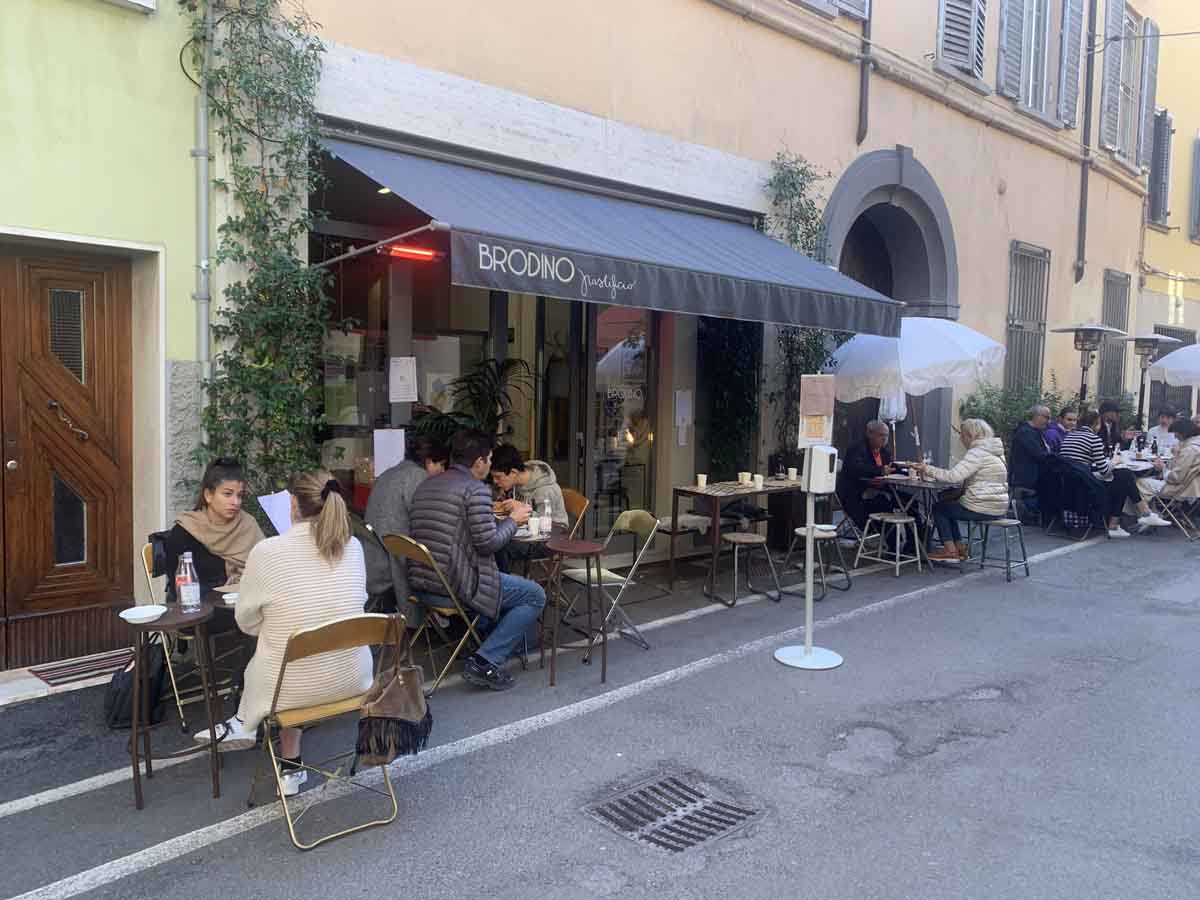
After piadina, you simply MUST try fresh pasta while in Cesena! Once again, here fresh pasta is slightly different from the meat-based specialties from Emilia – the filling of Cesena Cappelletti (ring-shaped pasta) is made with cheese!
The best place to try traditional Cesena cappelletti is Brodino, a really cute pasta shop with an attached restaurant, located in the heart of the historic centre. You can watch people make pasta by hand, and try it for yourself – cappelletti come with either a meat-based broth or a vegetable one, or you can opt for passatelli, tagliatelle al ragù, or even spinach and ricotta ravioli.
Whatever you wish, just make sure you book ahead as the place is VERY POPULAR and only open for lunch!
8) Spend a Day in Cesenatico
Cesena is only 17 km from the seaside, so if you’re visiting in summer, spending a day on the beach is really one of the best reasons to visit Cesena.
The closest seaside resort is Cesenatico, famous for having been the birthplace of Marco Pantani, the greatest cyclist of all time. There’s a small museum near the train station dedicated to the Pirata, with info about his life and cycling achievements.
The historic centre of Cesenatico develops around the Porto Canale, a canal designed by Leonardo da Vinci and lined with traditional boats. It’s a fun place to wander around before heading to the beach, stretching on either side of the canal (I personally prefer the right-hand side, where the water is calmer).
If you have time for one meal in Cesenatico, a good option is Marè at the end of the Porto Canale, known for its delicious breakfasts (a rarity in Italy!) and for its creative take on traditional seafood recipes.
If you’re heading to the area, have a look at this article about 8 reasons to visit Cervia, Italy!
Want to explore more of Emilia-Romagna? Here’s our post about the 23 best things to do in Parma for some inspiration!
So, would you like more reasons to visit Cesena? Get in touch on Instagram or in the comment section and we’ll give you one more!
